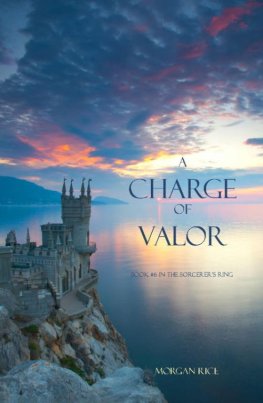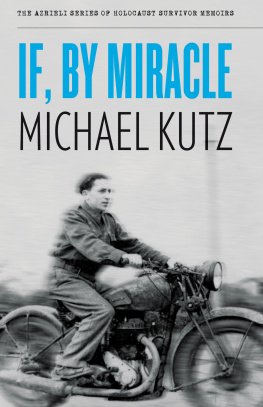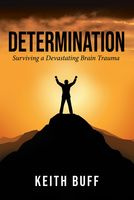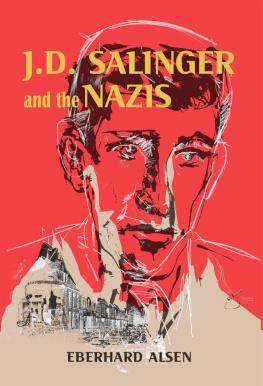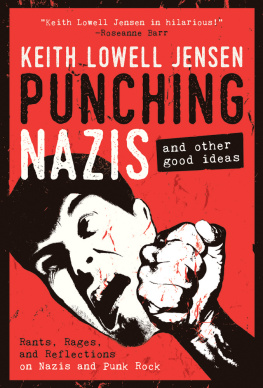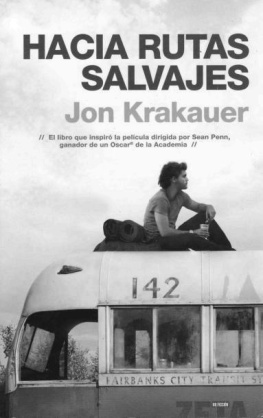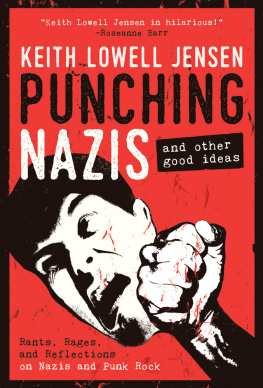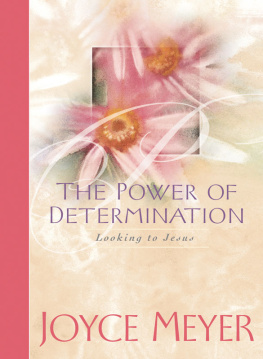Rutas
CLOSET
BY KEITH MORGAN
WITH RUTH KRON SIGAL

UNITY PRESS
AN IMPRINT OF UNICORN PRESS LTD.
ABOUT THE AUTHORS
Keith Morgan was born in January 1954, in Blackpool, England. He began his career as a reporter for his hometown newspaper in Blackpool in 1975, moving to Vancouver, British Columbia, in 1980, where he is currently the Driving Editor for The Province and Vancouver Sun newspapers.
Ruth Kron Sigal was born in Lithuania in July 1936. After the Second World War, she moved to Canada with her family, where she died in December 2008, shortly after the completion of Rutas Closet. A more detailed account of her life in Canada is at the end of this book.
ISBN 978 1 906509 26 2
EBOOK ISBN - MOBI: 978 1 906509 27 9
EBOOK ISBN - EPUB: 978 1 906509 32 3
First published in UK in 2013 by Unity Press,
an imprint of Unicorn Press Ltd
66 Charlotte street
London
W1T 4QE
Keith Morgan/Ruth Kron Sigal 2008
All rights reserved. No part of this publication may be reproduced, stored in a retrieval system, or transmitted in any form or by any means, electronic, mechanical, photocopying, recording or otherwise, without the prior permission of the publishers in writing.
This book is typeset in Minion Pro
Design and illustration: Frank Myrskog.
Printed in India by Imprint Digital Limited.

Dedicated to Tamara Kron

Much was hidden in the darkest corners of Rutas Closet her own mind.
After decades of silence, Ruth Kron Sigal emerged from its mental confines to shine a light on the horrors locked within.
The Holocaust survivor recalled her most painful memories, hoping the lessons they teach will ensure no child will feel the need to hide in such a dark place again.
Acknowledgements

Rutas Closet would not have been possible without the assistance of many people around the world, who generously gave of their time.
Deep gratitude is extended to Rutas rescuer Ona Ragauskas, now deceased; the Right Honourable Sir Martin Gilbert, the noted Holocaust historian and Winston Churchills official biographer; Saul Issroff, a Jewish genealogist; the late Leiba Lipshitz, Shavl ghettos unofficial historian; and Regina Kopilevich, our guide and interpreter in Lithuania.
The following people also contributed significantly: Sheila Barkusky, Christer Bergstrm, Giedre Beconyte, Aaron Breitbart, Simcha Brudno, Ken Wosk, Sonia Zilberman-Wasserman, Markas Zingeris.

Shortly after this manuscript was completed, co-author Ruth (Ruta) Kron Sigal died after a long fight with cancer. Her enthusiasm for the project was boundless and she passed away, thrilled to know that her important story would be told far and wide.
Footnote
Deceased
FOREWORD
I have watched the evolution of this book with considerable fascination. Keith Morgans work over several years has created one of the finest Holocaust memoirs.
It has not been an easy task: memories of so long ago can be fragile and uncertain. But Ruth Kron Sigal Ruta was determined that the story should be told, and Keith Morgan worked exceptionally hard to ensure that it was told to the highest possible standards of readability and accuracy.
We are familiar with many of the great Jewish communities of the pre-war years and of their fate when they were turned into ghettos and became the scenes of mass murder and deportation. One such place that is less familiar is the Lithuanian town of Siauliai, known in Yiddish as Shavl. The few survivors of that once vibrant Jewish community have often expressed to me their sadness that it does not figure as prominently as it ought in most accounts of the Holocaust. This book redresses that balance.
There is another strength to this book that gives it particular importance today. On a recent visit to Lithuania, I was shocked by the unpleasant resurgence of anti-Semitism that belittled the Jewish suffering and denials of the direct participation of Lithuanians in the mass murder have become quite rampant. Yet this Lithuanian participation during the Holocaust was fully documented by a Lithuanian Commission set up ten years ago when Lithuania was seeking entry into the European Union. Lithuanians today need to know the story that is told so movingly and so powerfully in these pages. They also need to give honour as Ruta and Keith Morgan do to those Lithuanians who, facing the hostility and enmity of their neighbours, risked their own lives to save Jews. Among the rescuers whose stories are told in this book was a Catholic priest, Father Adolfas Kleiba, rescuer of Jews.
These Righteous Among the Nations, of whom more than 760 Lithuanians have been recognised by Yad Vashem in Jerusalem, redeem the grim reality of Lithuanian participation in Nazi crimes, while at the same time enabling us to recognize Lithuanian Christian courage and life-saving achievements at a time when Christian values were being so terribly subverted.
Even as this book tells a harrowing story, shafts of light of Jewish courage and Christian righteousness shine through its pages, instructing and inspiring.
The Rt. Hon. Sir Martin Gilbert
19 July 2009
PREFACE
R UTAS CLOSET is the true story of how a Lithuanian Jewish family sought to escape the deadly clutches of Hitlers Final Solution.
Meyer and Gita Krons determination to survive grew stronger and they became more resourceful as family members and good friends perished at the hands of the Nazis and marauding armed collaborators.
A series of narrow escapes in their hometown of Shavl - Siauliai in the Lithuanian language and threats of betrayal by formerly friendly non-Jewish neighbours failed to extinguish the familys spirit.
This story takes place in a tiny Baltic country that even today wrestles with its collective conscience. It does so not because so many of its population stood by and watched their Jewish neighbours perish but because too many among them played a significant role in the annihilation of more than 200,000 Jews 96 percent of the pre-war Jewish population.
Todays Lithuanians are reminded constantly about the complicity of many of their forebears. The blood of murdered Jews, who lie in shallow mass graves on the edge of town, stain virtually every community. Simple memorial stones are all that reveal the approximate numbers of Jews buried there are all that identify these locations.
To date, the telling of the story of mass murders and collaboration in Lithuania has been largely confined to academic publications and limited distribution Holocaust survivor memoirs, which are rarely read outside of the Jewish community at large.
Rutas Closet explores that dark side of recent history but it also celebrates the few who risked their lives to save their Jewish brethren. Outside the high barbed wire fence of each ghetto, there were Catholic priests, who practiced what they preached. They ignored the entreaties of the church hierarchy not to become involved in rescuing Jews. They also decried brother priests who played an active role in the wholesale murder of the Jews.
The righteous clergy members were aided by members of their mainly rural flocks, whose faith moved them to save Jewish lives. It is only the selflessness and bravery of such ordinary folks all those years ago that have made it possible today to share the Krons inspirational story of the triumph of good over the jackbooted evil that rampaged through the Baltic lands in the 1940s.


